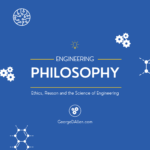New Engineering Ethics: Deep Dive into the DFMEA Strategy

Engineering Ethics:
Introduction – Engineering Ethics applied to the Product Life Cycle
Let’s delve into the realm of “Engineering Ethics” as it pertains to the entire product life cycle, shedding light on key observations regarding the creation of goods for public consumption. Initially, products are designed with the intention of being sold, manifesting themselves to the public as assemblies of positive, well-intended functions that add value to the owner. Consequently, with the growing complexity of the product assembly, there is a plethora of possibilities related to the elements of assembly, their interactions, functional capabilities, even conflicts related to their respective intended functions. Therefore eventually, if even one of them may go bad, i.e., it would diminish its intended capabilities, or just break.
Furthermore, it is imperative that consumers undergo basic training in product usage to grasp the intended functionalities and mitigate misuse. Otherwise, any misuse falls squarely on the shoulders of the consumer. Additionally, manufacturers hold responsibility by unequivocally asserting that their products will function as intended, barring any misuse.
Generally, this line of reasoning prompts several critical questions with “what if”:
- For example, an element of the assembly fails during normal operation?
- Consequently, components separate and / or disintegrate?
- Possibly, one component or function interferes with another?
- Finally, consumers fail to recognize abnormal usage in their daily routines?
The intent of this Article - Engineering Ethics
Therefore, this article will explore the transition first from the realm of engineering and functional intent to the actual functional capabilities as manufactured. Then second, shift into the legal domain. All through the lens of Systems Engineering philosophy, particularly from an Engineering Ethics perspective.
The Manufacturer's (OEM) Engineering Ethics
Overall, when it comes to the Manufacturer’s Ethics, there’s a general expectation that manufacturers adhere to certain ethical standards concerning both the product’s composition and its entire lifecycle.
Generally, this encompasses the individual design elements as well as their integration into a total assembly. Moreover, it entails ensuring that the entire assembly functions seamlessly throughout the warranty period and beyond, with proper maintenance and servicing.
Furthermore, to facilitate this, OEMs often provide consumers with recommended schedules for maintenance activities. Additionally, both dealerships (sellers) and OEMs (manufacturers) furnish comprehensive information before, during, and after the vehicle purchase. Basically, all in alignment with the initial commitment to deliver a high-quality product. Hence, Engineering Ethics supposedly play a pivotal role in upholding these standards throughout the manufacturing and lifecycle processes.
The Design Intended – a Promised Product, as advertised by the Manufacturer
While perusing the dealer’s selection of vehicles, individuals seek one that resonates with their personality and financial capacity, envisioning a product that not only fulfills their needs and desires but also aligns with their beliefs. Upon selection, this chosen vehicle embodies a perfect dream:
- All features listed on the menu operate flawlessly
- Durability remains uncompromised
- Abundant performance data, quality statistics, and assurances bolster confidence in the purchase
Sequentially, upon assuming ownership, consumers place unwavering trust in the producer and seller regarding the integrity and excellence of the specific assembly. Moreover, this moment marks a pinnacle of expectation, where every aspect is anticipated to perform at 100%:
- Total product longevity, whether in years or mileage
- Functionality maintenance through regular servicing
- Long-term viability of individual components and their integration within the assembly
- Various other expectations, regardless of their validity
Consumer's Reflection
Finally, this idealized perception, termed “Product / Design Intended,” influences consumer decision-making significantly. Ethically, it epitomizes the collection of promises made by the product Manufacturer to the consumer, with the implicit hope that the engineering behind it will deliver flawless performance, although this is inherently unattainable. Consequently, consumers may consider factors such as the cost of ownership and historical warranty data but ultimately accept the challenge and drive off the dealer’s lot with their chosen vehicle.
The Product Functional Capabilities – a Consumer Experience (Reflection on the Manufacturer’s Engineering Ethics)
The vehicle assembly is truly a marvel of engineering ingenuity. The product is a result of many engineering hours and activities resulting in a successful sale of each individual vehicle assembly. Its performance within the “intended” usage parameters should be satisfactory to the user / operator. As “design intended”, some vehicles are faster, some more fuel efficient, some safer, etc. – all as advertised.
Furthermore, rare consumer would take time to investigate the specificity of the promised functional parameters in the beginning of the Lifecycle. Things like stopping distance, fuel consumption, or even tire pressure – all taken for granted, as calibrated or set per manufacturer’s specifications.
Moreover, it is only when something unexpected happens to the component or a function, only then the unprepared consumer begins the learning of the burdens related to this specific Vehicle Assembly. In addition, depending on the nature of the failure mode, the specificity of the “burden” may relate to the “design” or assembly “process”, and was overlooked, or not addressed.
This condition is clearly non-ethical behavior on the part of the Manufacturer. This happens all the time. The evidence is in the open with amount of information available related to the warranty, service repairs, safety related recalls, non-safety recalls, etc. Interestingly enough, the result of the lack of ethics costs both the public and car makers a lot of money and hardship.
When the Product Capabilities do Not match the Product Promises (Intended Function) – Product Legal Disclosure
- Category related to the “by design conditions”
Hence, when a specific function fails to consistently perform under all circumstances but is explicitly promised by the Manufacturer as a selling point, an ethical dilemma emerges. This conflict arises between the idealized promise of a desirable feature and the actual functional capability of the product. Such conditions prompt a transition from the realm of engineering design and development to a legal framework, where the Manufacturer’s disclosure plays a crucial role. Often relegated to fine print, this disclosure elucidates the “normal operation condition” under which the function will perform as intended by design. This shift underscores the importance of ethical considerations in ensuring transparency and accountability in product marketing and consumer relations.
Example “by Design” produced assembly: Tesla Cybertruck “Car Wash” mode:
- Failure to put Cybertruck in Car Wash mode may result in damage – says the Manual,
- Damage caused by the car washes is not covered by the warranty
Read the Manual: https://www.tesla.com/ownersmanual/model3/en_us/GUID-65384C1F-86F2-44E8-A8BC-8A12E7E00A40.html
- Separately, Category related to the “unexpected conditions”
In instances where failure modes were unforeseen or not contemplated during the development process, the severity of the issues may necessitate an urgent remedy. This raises the question: how could such failures occur despite the extensive time and effort invested in the development and production of assembly elements? These unforeseen or incomprehensible failure modes, termed as Unknown or Un-Comprehended failures, have the potential to significantly impact the fundamental operation of the vehicle. In such scenarios, swift action is imperative to address the situation and mitigate any adverse effects on vehicle performance and safety. This underscores the importance of rigorous testing, analysis, and ongoing evaluation throughout the development lifecycle, emphasizing the ethical responsibility of manufacturers to ensure the reliability and integrity of their products.
Example: Tesla Sticky Pedal. This is actually so mondain, yet clearly made it to the consumer on all assembled vehicles.
In the News (Video included): https://www.westernjournal.com/tesla-halts-cybertruck-deliveries-video-detailing-potentially-fatal-flaw-goes-viral/
- Lastly, addressing the category in which the vehicle is functioning as intended and expected, however, not quite
In certain cases, especially with advanced functions inherent in modern high-tech vehicles, a more stringent approach is necessary to define their intended purpose. This highlights a clear conflict between the envisioned “Design Intended” and the actual product use or application, particularly in the operator’s everyday utilization of certain functions. As a result, the outcome often deviates significantly from what was initially anticipated. This discrepancy underscores the importance of reconciling the manufacturer’s design intentions with the practical realities of consumer usage. Ethical considerations come into play as manufacturers must ensure that their products not only meet performance expectations but also deliver a user experience aligned with consumer needs and preferences.
Example: Tesla Autopilot case – may require a separate article to review the failure to use the systemic approach in the creating the Vehicle Feature, advertising it to the consumer, educating the user in the proper utilization of it, as well as verification of the “safe” product as the whole assembly.
In the News: https://ca.news.yahoo.com/tesla-autopilot-recall-probed-us-135046910.html
Conclusion – Engineering Ethics in the Development of Complexity; Understanding the Potential Failures
In conclusion, Ethics in Systems Engineering is paramount for understanding potential failures and ensuring the safety and reliability of vehicle systems. A holistic approach to Systems Engineering fosters a comprehensive understanding of system interdependencies and interfaces, facilitating seamless coordination among diverse engineering disciplines. Engineers, guided by ethical principles, prioritize transparency and accountability, placing the well-being and trust of vehicle occupants above all else.
However, there is a notable discrepancy between ethical ideals and current practices in the automotive industry. Despite the emphasis on Engineering Ethics throughout the development and verification process, the prevalence of issues leading to recalls, repairs, and even accidents suggest a lapse in the supporting Engineering Culture. Manufacturers often prioritize quick “out of the door” deliveries over systemic, comprehensive development, leading to compromises in safety and reliability.
Moreover, as vehicle assemblies become increasingly complex and incorporate numerous new functionalities, the potential for “new” or “unknown” failure modes to emerge grows significantly. This underscores the need for a proactive approach to Systems Engineering Ethics, where rigorous testing, continuous evaluation, and a commitment to excellence are fundamental principles guiding the development of safe, reliable, and cost-effective vehicles.
References:
Engineering Ethics, general Reference: https://en.wikipedia.org/wiki/Engineering_ethics
Referencing Objectivist View on Engineering Ethics: https://georgedallen.com/upholding-objectivist-principles-navigating-basic-engineering-ethics/
Previous Article, Engineering Ethics addressed: https://georgedallen.com/new-engineering-ethics-fundamentals-of-product-development/
Other examples:
- Misunderstood system level Integration requirements. General Motors recalls 323K pickups for tailgate malfunction, video included: https://www.clickondetroit.com/news/local/2024/02/06/general-motors-recalls-323k-pickups-for-tailgate-malfunction/
- Disconnect between the Vehicle Level and lower subsystems requirements. Honda vehicles during the utilization in the cold weather exhibit the following conditions – the rear trailing arm can fall off: https://static.nhtsa.gov/odi/rcl/2023/RCLRPT-23V228-8035.PDF
About George D. Allen Consulting:
George D. Allen Consulting is a pioneering force in driving engineering excellence and innovation within the automotive industry. Led by George D. Allen, a seasoned engineering specialist with an illustrious background in occupant safety and systems development, the company is committed to revolutionizing engineering practices for businesses on the cusp of automotive technology. With a proven track record, tailored solutions, and an unwavering commitment to staying ahead of industry trends, George D. Allen Consulting partners with organizations to create a safer, smarter, and more innovative future. For more information, visit www.GeorgeDAllen.com.
Contact:
Website: www.GeorgeDAllen.com
Email: inquiry@GeorgeDAllen.com
Phone: 248-509-4188
Unlock your engineering potential today. Connect with us for a consultation.


